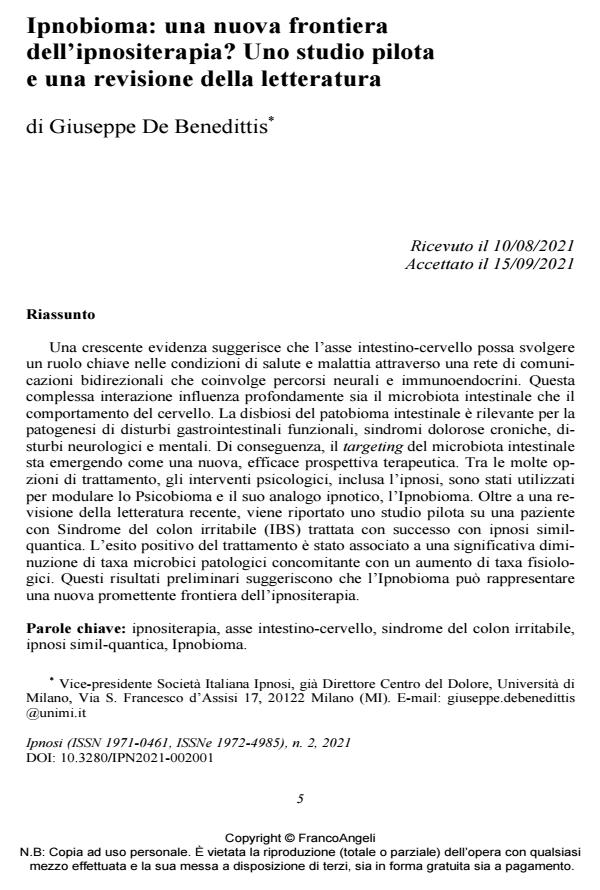Hypnobiome: A New Frontier of Hypnotherapy?
Journal title IPNOSI
Author/s Giuseppe De Benedittis
Publishing Year 2022 Issue 2021/2
Language Italian Pages 21 P. 5-25 File size 304 KB
DOI 10.3280/IPN2021-002001
DOI is like a bar code for intellectual property: to have more infomation
click here
Below, you can see the article first page
If you want to buy this article in PDF format, you can do it, following the instructions to buy download credits

FrancoAngeli is member of Publishers International Linking Association, Inc (PILA), a not-for-profit association which run the CrossRef service enabling links to and from online scholarly content.
This work represents the first contribution aimed at identifying hypnotic communiations in therapeutic approaches of different orientations. In particular, it attempts to analyze a clinical case conducted according to a systemic-relational model to determine the hypnotic aspects unconsciously utilized by the therapist. Evaluating the hypothesis of whether, from a perspective of integration, hypnotic techniques and communications can be utilized by therapists of a different theo-retical approach, a case analysis is presented and analyzed.
Keywords: hypnotherapy, gut-brain-axis, IBS, quantum-like hypnosis, hypnobi-ome.
Giuseppe De Benedittis, Ipnobioma: una nuova frontiera dell’ipnositerapia? Uno studio pilota e una revisione della letteratura in "IPNOSI" 2/2021, pp 5-25, DOI: 10.3280/IPN2021-002001